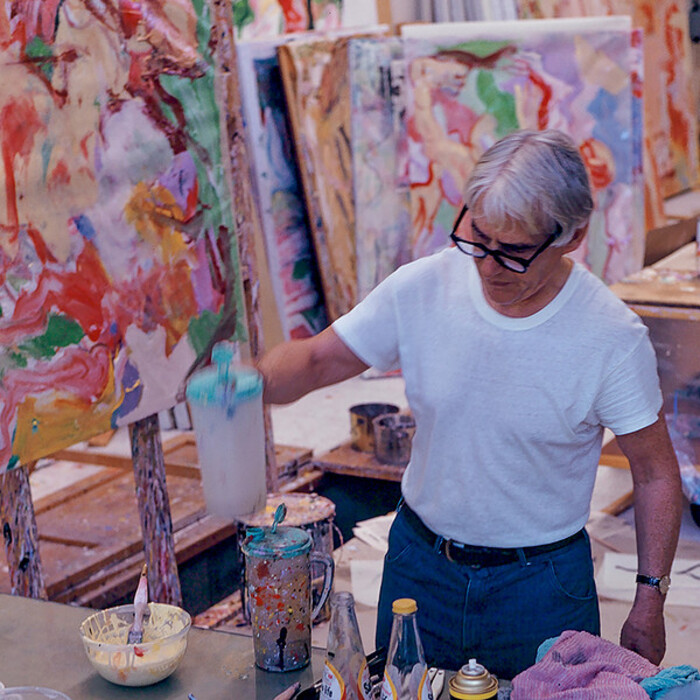VENICE - The intimate tension between the thousand-year artistic history of Rome and New York, the city of the future, where Willem de Kooning finally arrived after boarding a ship, without immigration documents, from Holland to the United States in 1926. To obtain American citizenship he will have to wait until 1962 at the height of his career. There is perhaps this, in the artist's words when, in an interview in the winter of 1959, he said: "I felt I had to return to Rome immediately, because the city had made an enormous impression on me".
De Kooning, icon of modern American art, together with Pollock and Rothko, knew Italy and its pictorial tradition well - the visits he made to the Metropolitan Museum together with his friend Arshile Gorky were well known - and between 1950 and 1956 he had seen his works exhibited in three Biennials in Venice, but only in 1959 did he have the opportunity to go to Italy for the first time, and then return ten years later, invited to the Festival dei Due Mondi in Spoleto.
The moments of the artist's life and research linked to the two long stays are at the center of the exhibition "Willem de Kooning and Italy", curated by Gary Garrels and Mario Codognato, at the Gallerie dell'Accademia, in Venice, organized in collaboration with the Foundation named after the artist, until 15 September (Marsilio Arte catalogue). The exhibition is one of the highlights of the vast offer of events and exhibitions dedicated to modern and contemporary art present in Venice during the Art Biennale, inaugurated today.
Rome - together with Venice, which had been a destination for sentimental reasons - had been the fundamental stop on the first trip. For de Kooning, the capital had revealed itself as a fruitful period of meetings with other artists, of visits to places full of history and art, of experimentation, drawings in the studio made available by Afro, of "starting over again" as happened in other phases of his artistic activity. On display, in the first rooms, there are large New York paintings, created a few months earlier, alongside the "Black and White Rome" of 1959 and then the explosion of light and color of works such as "Villa Borghese" "A Tree in Naples" and "Door to the River", from 1960, following the Roman stay.
The second stay, ten years later, is characterized above all by de Kooning's "discovery" of sculpture (an aspect that is considered central in the curatorial proposal). During one of his many visits to Rome, after the invitation to Spoleto, the artist meets the sculptor Herzl Emanuel who takes him to a foundry in Trastevere. Thirteen small, vaguely anthropomorphic clay sculptures will emerge from the artist's hands, which his friend will cast. From that moment,sculpture will enter de Kooning's expressive forms and the exhibition gives ample example of this.
On a general level, the Italian experience "had a profound effect on him" writes Garrels in the catalogue. The exhibition, he adds, "is the first serious attempt to better understand the impact of his time in Italy and his interest in the country on his life and work."

